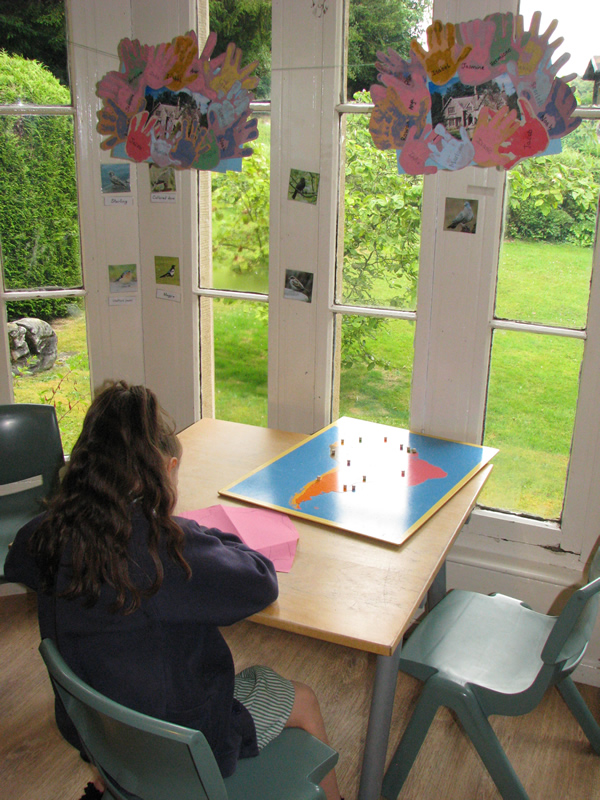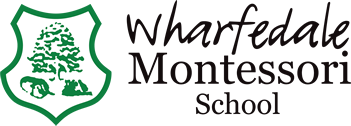The Montessori Curriculum provides children five key areas of learning: Activities of Everyday Living, Sensorial, Mathematics, Language, and Cultural. Each learning area begins with of a set of Montessori materials that teach one key knowledge area or skill. Built-in controls of error allow the child to rectify their mistakes independently. Through repetition, the materials enable children to develop a foundational understanding and master the core competencies within each curriculum area. The Montessori curriculum compliments the overarching principles of the EYFS (Early Years Foundation Stage) beautifully and supports the learning and welfare requirements set by the Department for Education and Ofsted. All observations made on My Montessori Child are tied into developmental statements in the EYFS.
How does it work?
Continuous observation and record keeping using My Montessori Child helps us to work in partnership with you to identify your child’s interests and developmental levels. Our experienced teachers present materials tailored to develop and refine the skills your child is driven to master. Our high staff/child ratios allow teachers to present on a one-to-one or small group basis. They carefully judge when to step back and allow your child the time and space to repeat their activities.
Ofsted 2021
“The Curriculum in Children’s House for pupils from three years old is highly aspirational. A focus on early Mathematics and early language helps children get off to a secure start. Children develop a wide-ranging vocabulary which they use with familiarity in their activity. There is a focus on developing independence in this setting. Staff take every opportunity to introduce children to a wide range of cultures, and children develop a fascination with the world. Children are deeply engaged in the activities on offer. They are focused on their learning and interact beautifully with their peers. Children are excited to learn.”
Activities of Everyday Living
Activities of Everyday Living are exactly as they sound, they incorporate activities which aim to develop skills which we use in everyday living. Children observe adults or older children function independently in their daily life, and are driven to expand their skillset to achieve more agency over themselves. Children’s independence, concentration and fine motor skills are all refined through these activities. This area also introduces the children to the cycle of activity where they can choose, complete and return their activities to the shelves ready for their friends to use. This provides a foundation for their learning in the Montessori environment.
Example activities include:
- Spooning
- Pouring
- Sewing
- Sweeping
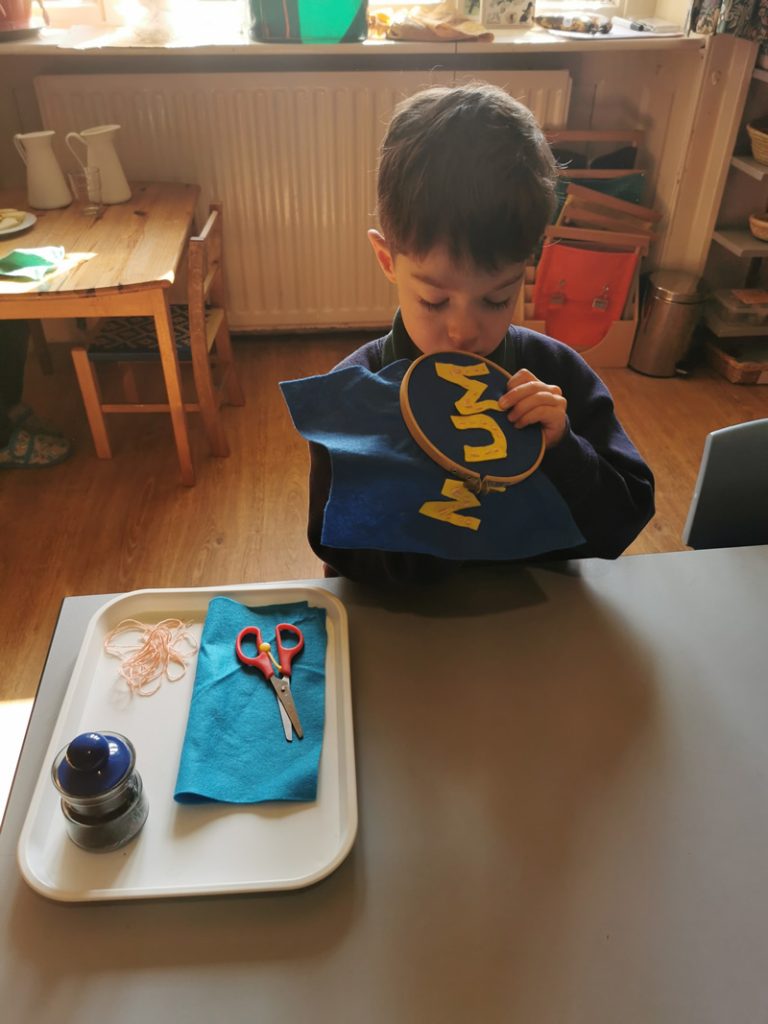
Sensorial
Through using the sensorial activities, the children refine their senses of sight, touch, sound, smell and taste. This helps the child to organise sensory impressions and better their understanding of the world. Children learn about dimension, shape, colour, smell, taste and sound. They learn about distinguishing similarity and difference, sorting and ordering. Sensorial activities also prepare the child for further work with mathematics, language and geometry.
Example materials include:
- Broad stair
- Colour Box
- Geometric Solids
- Trinomial Cube
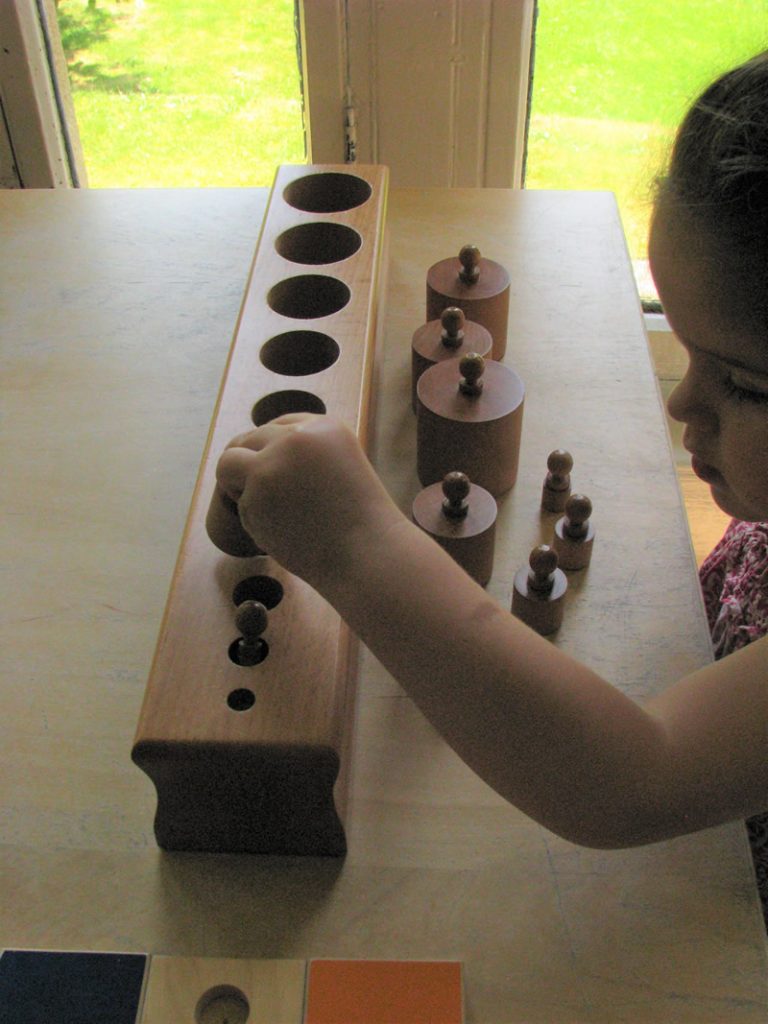
Mathematics
The Mathematics materials are designed to teach children to understand abstract mathematical concepts and relationships through hands-on manipulative learning. Children learn to count, identify and match numerals to their quantity, relate decimal quantities and symbols, and become aware of the functions of addition, subtraction, multiplication and division.
Example materials include:
- Number rods
- Short Bead Stair
- Seguin Boards
- Hundred Board
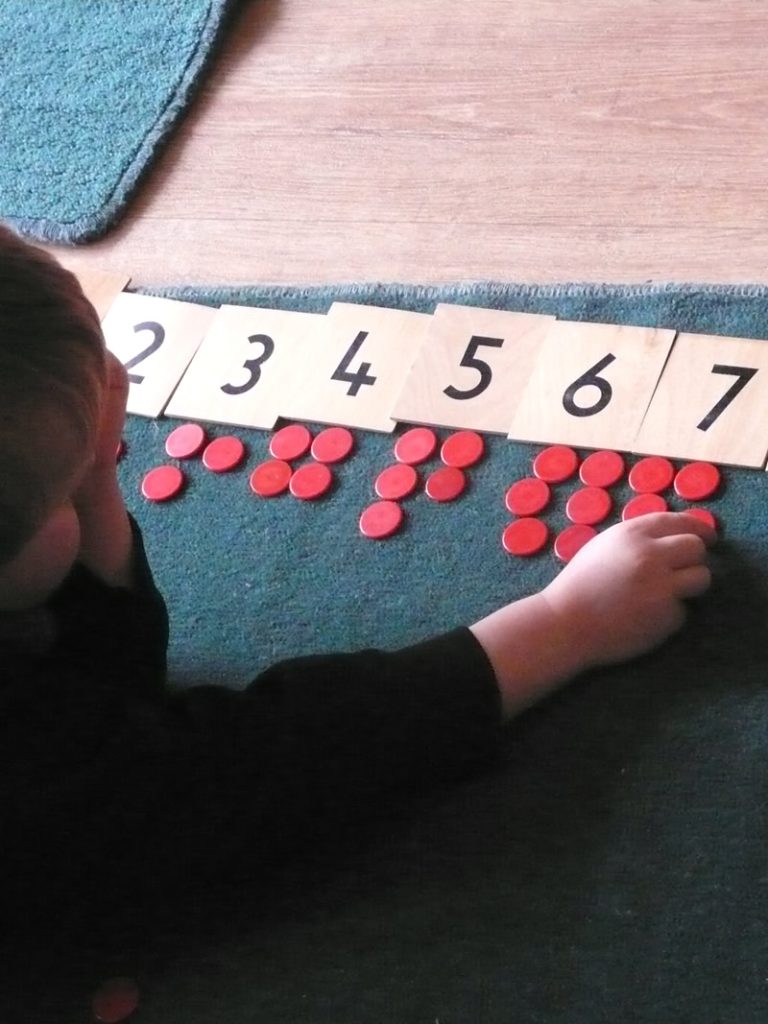
Language
The skills required for reading, writing and oral language are developed through hands-on experience using the Montessori language materials. Children learn letter sounds (Phonics), letter identification and formation, how to combine sounds to make words, how to build simple sentences, and how to properly hold a pencil. Oral language skills are developed through daily social interactions, group experiences, and lessons in grace and courtesy.
Example materials include:
- Sandpaper Letters
- Large Moveable Alphabet
- Insets for design
- Pink boxes
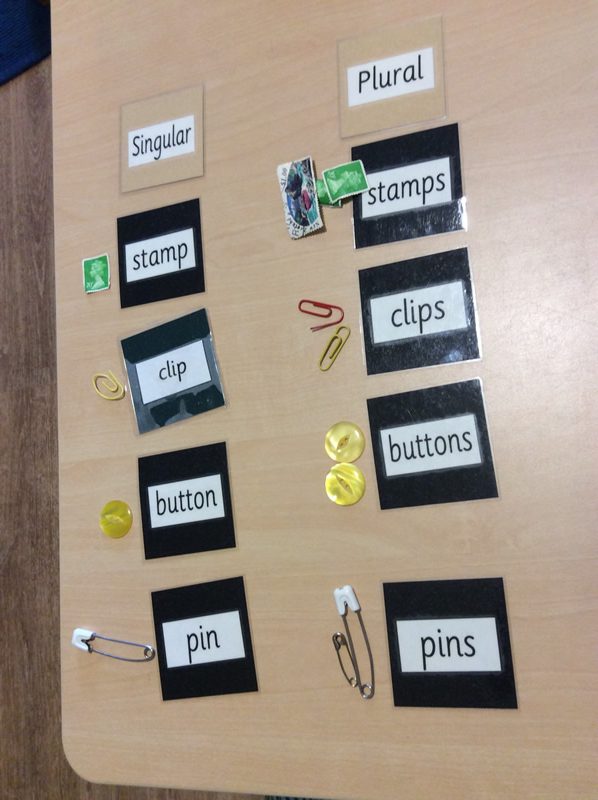
Cultural
The Cultural Curriculum incorporates Geography, Botany, Zoology, Science, History, Music and Art. Through explorations of culture, children develop an understanding of their community, their world and their social responsibilities. Children learn to respond to diversity with respect, appreciate music and art, and develop awareness of sustainability.
Example materials and activities include:
- Sandpaper globe
- Puzzle maps
- Seasons activities
- Three part cards
